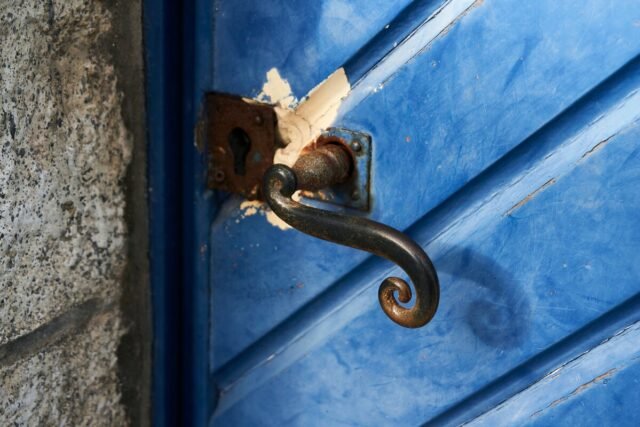Doorknobs and handles are some of the most frequently used items in any home. Over time, these can become loose, damaged, or just look outdated. Replacing a worn out or outdated doorknob or handle is an easy DIY project that can completely transform the look and feel of a room. With a few tools and basic skills, you can install a new doorknob or handle in less than an hour.
Gather the Necessary Tools and Materials
Before starting any doorknob or handle replacement project, you’ll need to gather a few essential tools and materials. Having these items on hand will make the installation process smooth and efficient.
Tools Needed
- Screwdriver – You’ll need either a Phillips head or flat head screwdriver depending on the type of screws used on your existing doorknob/handle.
- Tape measure – To accurately measure for placement of the new doorknob/handle.
- Pencil – To mark the measurements.
- Cloth or paper towels – For cleaning up any mess.
- Power drill (optional) – A drill can speed up the screw removal and installation process.
Materials Needed
- New doorknob/handle – Make sure to buy one that fits your door properly. Measure the backset and hole positions of your existing hardware before purchasing a replacement.
- Screws – Often provided with new doorknobs and handles. If not, bring the old screws to the hardware store to find replacements.
Remove the Old Doorknob or Handle
Once you’ve gathered the necessary tools and new hardware, it’s time to remove the old doorknob or handle.
- Locate the screws on the interior side of the door. There are typically two screws on the knob/lever and two on the latch/lockset.
- Use your screwdriver to remove all the screws and carefully pull the interior doorknob/lever off.
- For exterior hardware, look for a small hole or slot on the side of the handle. Insert a thin tool like a paperclip into the hole to press down the release mechanism. This will allow you to pull the exterior handleset off.
- Remove both halves of the old doorknob/handle and set them aside. You can now see the latch mechanism in the door edge.
- Use a paper towel or cloth to clean away any dirt or debris around the now exposed latch and screw holes.
Prepare the Door for a New Doorknob/Handle
Before installing the new hardware, you’ll need to make sure the door is prepped properly. This involves marking new screw hole positions if needed and making any necessary adjustments to the latch mechanism.
- Use a tape measure to determine the backset of your old doorknob/handle. Backset is the distance from the door edge to the center of the knob/lever. Standard backsets are 2 3⁄8” or 2 3⁄4”.
- Measure and mark the same backset distance on your new hardware. Use a pencil to mark the new screw positions.
- For round knobs, also measure the horizontal distance between the old screw holes. Transfer these measurements to the new hardware.
- If your new doorknob/handle is a different shape or size than the old one, you may need to enlarge the screw holes in the door edge. Use a drill or chisel to open them up.
- Make any necessary adjustments to the latch mechanism so your new hardware will align properly.
Install the New Doorknob or Handle
Once all measurements are transferred and holes are drilled, you’re ready for installation. Follow these steps:
- Insert the latch mechanism into the door edge, being sure it is centered and straight.
- Position the exterior handleset on the surface of the door, aligning the handle with your pencil marks.
- Insert the screws through the new holes on the exterior hardware. Tighten them with your screwdriver.
- Place the interior assembly against the other side of the door, again lining it up with your measurements.
- Insert the interior screws and tighten them gradually until snug. Be careful not to overtighten.
- If there is a striker plate on your door frame, make sure it aligns properly with the new latch mechanism. Adjust if needed by loosening the striker plate screws, repositioning, and tightening again.
- Install any additional components like lock cylinders and turn buttons as directed by the manufacturer.
Test the Newly Installed Doorknob/Handle
Before considering your doorknob replacement project complete, test it out.
- Close the door and turn the knob/lever multiple times from both sides to ensure smooth operation.
- Open and close the door to see if there are any issues with alignment or catching.
- Make sure the latch extends and retracts properly, creating a consistent reveal between the door edge and frame.
- Tighten any loose screws or make adjustments as needed until the hardware operates correctly.
- Give the knob/lever a firm tug from both sides to confirm it is tightly secured.
- Consider adding thread locking fluid to the screws to prevent loosening over time.
With a few simple tools, some careful measurements, and proper installation, you can successfully replace the worn or outdated doorknobs/handles in your home. Just follow these step-by-step instructions for smooth and easy DIY doorknob replacement.
Choosing the Right Doorknob or Handle
Selecting new doorknobs or handles for your home goes beyond just appearance. You’ll need to consider a few important factors to ensure your new hardware fits properly and functions as it should.
Measure the Backset
As mentioned earlier, backset is the distance from the door edge to the center of the knob/handle. This is one of the most important measurements when selecting new hardware. Standard backsets are:
- 2 3⁄8” – Most common backset for interior doors
- 2 3⁄4” – Typical for exterior doors and some bathrooms
- 3” – Seen in custom homes or older construction
- 3 1⁄2” – Used for ADA compliant commercial doors
Measure your existing doorknob’s backset before shopping.
Know Your Door Thickness
Interior doors are usually 1 3⁄8” while exterior doors are 1 3⁄4”. New hardware must match the thickness of your doors.
Consider the Shape
Will you be installing round knobs or lever-style handles? Measure the existing hole positions and spacing to find replacement hardware that will fit.
Finish
Select a finish that matches your existing décor and hardware. Most common options are satin, polished, antique, oil-rubbed, and matte metals.
Added Features
Determine if you need additional functions like keyed locks, touchpads, or automatic openers. These will require special modifications to the hardware.
With all these considerations in mind, you can select the perfect new doorknobs or handles for a successful installation.
Doorknob and Handle Installation Tips
Replacing old, worn out doorknobs and handles around your home can give rooms a quick facelift. For the best results, keep these additional installation tips in mind:
- When buying new hardware, purchase a full set with matching knobs/levers and strike plates. Mixing and matching can lead to alignment issues.
- Pay attention to the door hand. Hinges on the left means it’s a left-handed door. Right hinges indicate a right-handed door.
- Use a drill for installing and removing screws to speed up the process. Just be sure to set it to a low torque setting to avoid damage.
- If holes are too large or loose, wrap screws with toothpicks or wooden matches to tighten the fit before installing new hardware.
- When dealing with pre-drilled doors, use tapered wood screws for a sturdy hold.
- For added security, apply thread locking fluid to the screws after tightening them during installation.
- If the alignment is slightly off, loosen screws on the strike plate to adjust it until the latch inserts cleanly.
- When installing exterior hardware, apply silicone caulk around the edges to protect from water damage.
- Consider hiring a locksmith if dealing with specialized security hardware and locks.
- Ask a helper to hold the opposite side of the door when installing hardware to ensure proper alignment.
With attention to detail and proper techniques, you can achieve an expert looking doorknob or handle installation that will stand the test of time.
Frequently Asked Questions About Doorknob/Handle Replacement
Replacing a doorknob or handle is one of the simplest DIY upgrades you can do in your home. To make the process even easier, here are answers to some frequently asked questions:
How do I remove the old doorknob?
Locate the screw covers on both sides of the knob/handle. Pry off the covers with a flathead screwdriver to expose the screws. Use the appropriate screwdriver to remove the screws and take off the old hardware.
What tools do I need?
You’ll need a screwdriver, pencil, tape measure, drill/chisel (if enlarging holes), and possibly a hammer. Have a cloth and cleaning solution ready too.
How do I measure for the new hardware?
Use a tape measure to determine the backset (distance from door edge to knob center) and width between the screw holes. Transfer these measurements to the new hardware.
What if the new knob doesn’t align with the old screw holes?
You may need to enlarge the existing holes slightly with a drill bit or chisel. Don’t make them too large.
My door sticks after replacing the knob – why?
The alignment between the latch and strike plate is off. Loosen the striker plate screws and adjust until the door latches cleanly.
Can I upgrade my existing knobs to lever handles?
Yes, as long as you select new levers with the same backset. The handle’s baseplates will conceal the old holes.
How do I tighten a loose knob?
Remove the knob, fill holes with toothpicks/wood shims, cut flush, and re-install. Apply thread locking fluid on screws.
Do I need to hire a locksmith?
Only if you’re installing high-security locks. For basic knob or handle replacement, no locksmith is needed.
With the right information and preparation, you can tackle doorknob or handle replacement like a pro. The improvement it makes to your home’s look and function is well worth the effort.
Conclusion
Replacing worn out or outdated doorknobs and handles is one of the simplest ways to improve the look and functionality of your home. With some basic DIY skills and the right tools, this is a project you can easily tackle in just an hour or two.
Follow the step-by-step process outlined here for smooth doorknob/handle removal and installation. Be sure to properly measure your existing hardware and door thickness when selecting replacements. Added features like locks, finishes, and shapes also need consideration before purchasing new knobs or handles.
Achieve an expert, upgraded look by taking your time to ensure proper alignment and operation. Test the newly installed hardware by opening and closing the door multiple times from both sides. Your patience will pay off with long-lasting, quality hardware that gives your home a fresh new feel.































